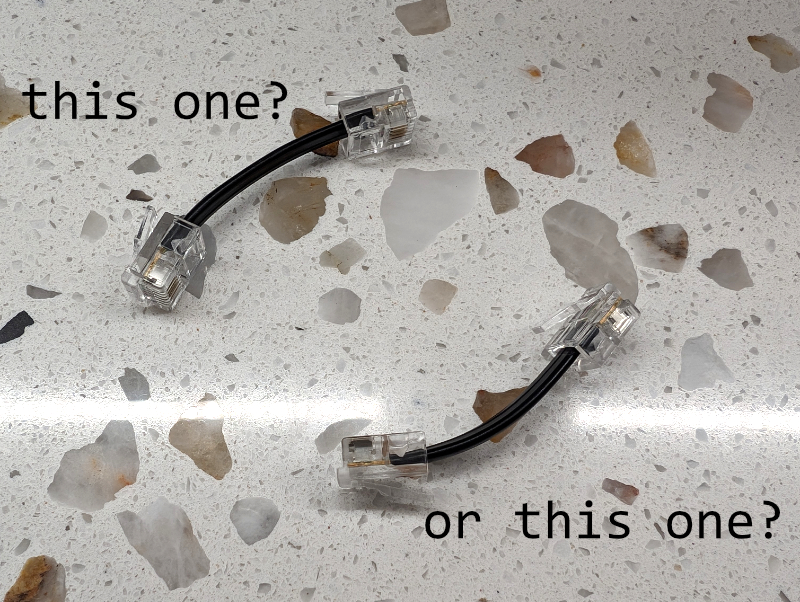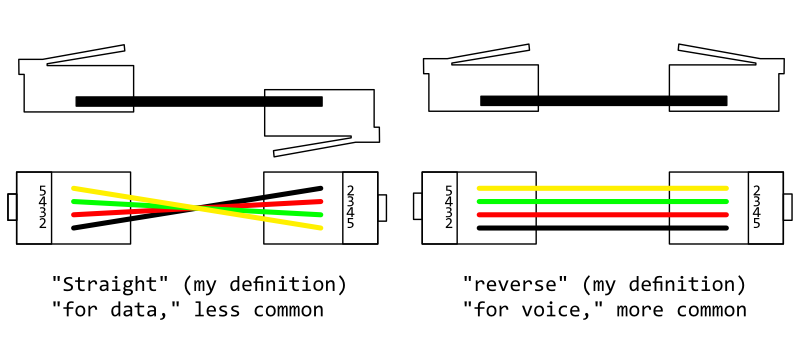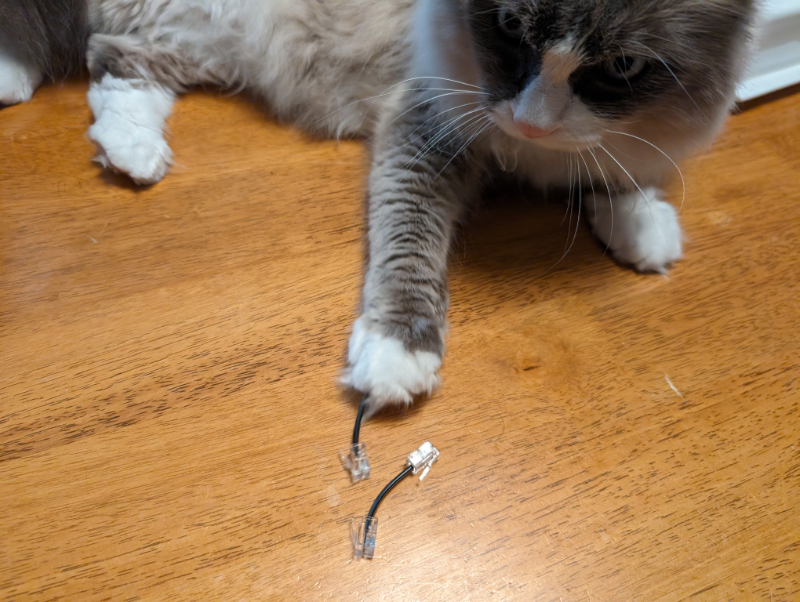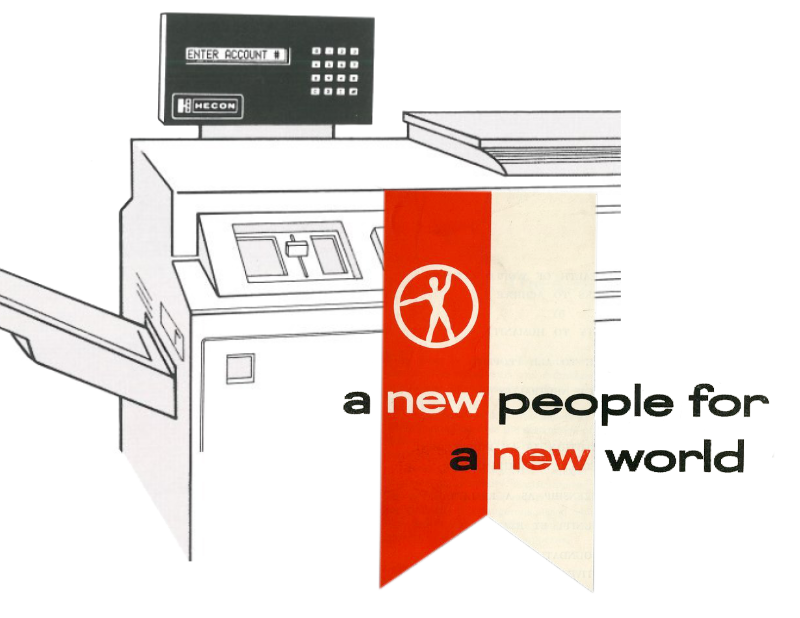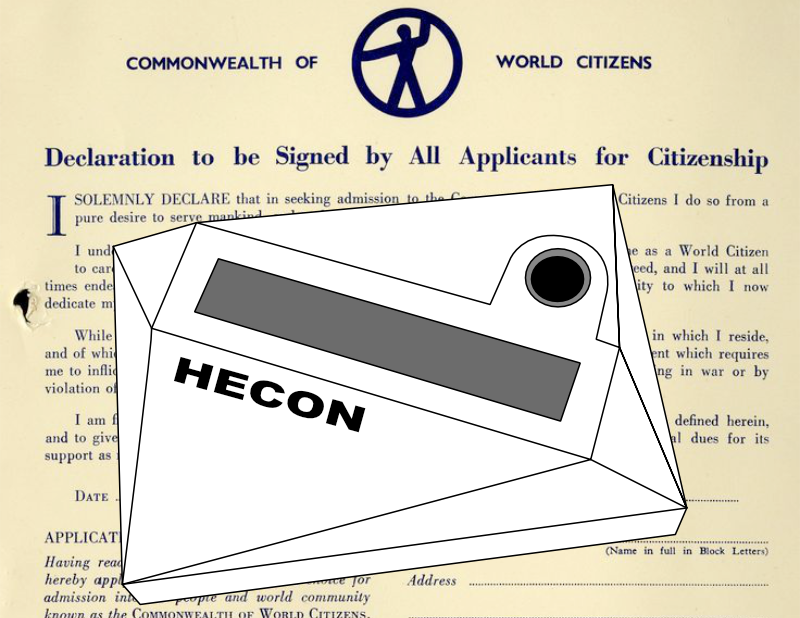memories of .us
How much do you remember from elementary school? I remember vinyl tile floors, the playground, the teacher sentencing me to standing in the hallway. I had a teacher who was a chess fanatic; he painted a huge chess board in the paved schoolyard and got someone to fabricate big wooden chess pieces. It was enough of an event to get us on the evening news. I remember Run for the Arts, where I tried to talk people into donating money on the theory that I could run, which I could not. I'm about six months into trying to change that and I'm good for a mediocre 5k now, but I don't think that's going to shift the balance on K-12 art funding.
I also remember a domain name: bridger.pps.k12.or.us
I have quipped before that computer science is a field mostly concerned with assigning numbers to things, which is true, but it only takes us so far. Computer scientists also like to organize those numbers into structures, and one of their favorites has always been the tree. The development of wide-area computer networking surfaced a whole set of problems around naming or addressing computer systems that belong to organizations. A wide-area network consists of a set of institutions that manage their own affairs. Each of those institutions may be made up of departments that manage their own affairs. A tree seemed a natural fit. Even the "low level" IP addresses, in the days of "classful" addressing, were a straightforward hierarchy: each dot separated a different level of the tree, a different step in an organizational hierarchy.
The first large computer networks, including those that would become the Internet, initially relied on manually building lists of machines by name. By the time the Domain Name System was developed, this had already become cumbersome. The rapid growth of the internet was hard to keep up with, and besides, why did any one central entity---Jon Postel or whoever---even care about the names of all of the computers at Georgia Tech? Like IP addressing, DNS was designed as a hierarchy with delegated control. A registrant obtains a name in the hierarchy, say gatech.edu, and everything "under" that name is within the control, and responsibility, of the registrant. This arrangement is convenient for both the DNS administrator, which was a single organization even after the days of Postel, and for registrants.
We still use the same approach today... mostly. The meanings of levels of the hierarchy have ossified. Technically speaking, the top of the DNS tree, the DNS root, is a null label referenced by a trailing dot. It's analogous to the '/' at the beginning of POSIX file paths. "gatech.edu" really should be written as "gatech.edu." to make it absolute rather than relative, but since resolution of relative URLs almost always recurses to the top of the tree, the trailing dot is "optional" enough that it is now almost always omitted. The analogy to POSIX file paths raises an interesting point: domain names are backwards. The 'root' is at the end, rather than at the beginning, or in other words, they run from least significant to most significant, rather than most significant to least significant. That's just... one of those things, you know? In the early days one wasn't obviously better than the other, people wrote hierarchies out both ways, and as the dust settled the left-to-right convention mostly prevailed but right-to-left hung around in some protocols. If you've ever dealt with endianness, this is just one of those things about computers that you have to accept: we cannot agree on which way around to write things.
Anyway, the analogy to file paths also illustrates the way that DNS has ossified. The highest "real" or non-root component of a domain name is called the top-level domain or TLD, while the component below it is called a second-level domain. In the US, it was long the case that top-level domains were fixed while second-level domains were available for registration. There have always been exceptions in other countries and our modern proliferation of TLDs has changed this somewhat, but it's still pretty much true. When you look at "gatech.edu" you know that "edu" is just a fixed name in the hierarchy, used to organize domain names by organization type, while "gatech" is a name that belongs to a registrant.
Under the second-level name, things get a little vague. We are all familiar with the third-level name "www," which emerged as a convention for web servers and became a practical requirement. Web servers having the name "www" under an organization's domain was such a norm for so many years that hosting a webpage directly at a second-level name came to be called a "naked domain" and had some caveats and complications.
Other than www, though, there are few to no standards for the use of third-level and below names. Larger organizations are more likely to use third-level names for departments, infrastructure operators often have complex hierarchies of names for their equipment, and enterprises the world 'round name their load-balanced webservers "www2," "www3" and up. If you think about it, this situation seems like kind of a failure of the original concept of DNS... we do use the hierarchy, but for the most part it is not intended for human consumption. Users are only expected to remember two names, one of which is a TLD that comes from a relatively constrained set.
The issue is more interesting when we consider geography. For a very long time, TLDs have been split into two categories: global TLDs, or gTLDs, and country-code TLDs, or ccTLDs. ccTLDs reflect the ISO country codes of each country, and are intended for use by those countries, while gTLDs are arbitrary and reflect the fact that DNS was designed in the US. The ".gov" gTLD, for example, is for use by the US government, while the UK is stuck with ".gov.uk". This does seem unfair but it's now very much cemented into the system: for the large part, US entities use gTLDs, while entities in other countries use names under their respective ccTLDs. The ".us" ccTLD exists just as much as all the others, but is obscure enough that my choice to put my personal website under .us (not an ideological decision but simply a result of where a nice form of my name was available) sometimes gets my email address rejected.
Also, a common typo for ".us" is ".su" and that's geopolitically amusing. .su is of course the ccTLD for the Soviet Union, which no longer exists, but the ccTLD lives on in a limited way because it became Structurally Important and difficult to remove, as names and addresses tend to do.
We can easily imagine a world where this historical injustice had been fixed: as the internet became more global, all of our US institutions could have moved under the .us ccTLD. In fact, why not go further? Geographers have long organized political boundaries into a hierarchy. The US is made up of states, each of which has been assigned a two-letter code by the federal government. We have ".us", why not "nm.us"?
The answer, of course, is that we do.
In the modern DNS, all TLDs have been delegated to an organization who administers them. The .us TLD is rightfully administered by the National Telecommunications and Information Administration, on the same basis by which all ccTLDs are delegated to their respective national governments. Being the US government, NTIA has naturally privatized the function through a contract to telecom-industrial-complex giant Neustar. Being a US company, Neustar restructured and sold its DNS-related business to GoDaddy. Being a US company, GoDaddy rose to prominence on the back of infamously tasteless television commercials, and its subsidiary Registry Services LLC now operates our nation's corner of the DNS.
But that's the present---around here, we avoid discussing the present so as to hold crushing depression at bay. Let's turn our minds to June 1993, and the publication of RFC 1480 "The US Domain." To wit:
Even though the original intention was that any educational institution anywhere in the world could be registered under the EDU domain, in practice, it has turned out with few exceptions, only those in the United States have registered under EDU, similarly with COM (for commercial). In other countries, everything is registered under the 2-letter country code, often with some subdivision. For example, in Korea (KR) the second level names are AC for academic community, CO for commercial, GO for government, and RE for research. However, each country may go its own way about organizing its domain, and many have.
Oh, so let's sort it out!
There are no current plans of putting all of the organizational domains EDU, GOV, COM, etc., under US. These name tokens are not used in the US Domain to avoid confusion.
Oh. Oh well.
Currently, only four year colleges and universities are being registered in the EDU domain. All other schools are being registered in the US Domain.
Huh?
RFC 1480 is a very interesting read. It makes passing references to so many facets of DNS history that could easily be their own articles. It also defines a strict, geography-based hierarchy for the .us domain that is a completely different universe from the one in which we now live. For example, we learned above that, in 1993, only four-year institutions were being placed under .edu. What about the community colleges? Well, RFC 1480 has an answer. Central New Mexico Community College would, of course, fall under cnm.cc.nm.us. Well, actually, in 1993 it was called the Technical-Vocational Institute, so it would have been tvi.tec.nm.us. That's right, the RFC describes both "cc" for community colleges and "tec" for technical institutes.
Even more surprising, it describes placing entities under a "locality" such as a city. The examples of localities given are "berkeley.ca.us" and "portland.wa.us", the latter of which betrays an ironic geographical confusion. It then specifies "ci" for city and "co" for county, meaning that the city government of our notional Portland, Washington would be ci.portland.wa.us. Agencies could go under the city government component (the RFC gives the example "Fire-Dept.CI.Los-Angeles.CA.US") while private businesses could be placed directly under the city (e.g. "IBM.Amonk.NY.US"). The examples here reinforce that the idea itself is different from how we use DNS today: The DNS of RFC 1480 is far more hierarchical and far more focused on full names, without abbreviations.
Of course, the concept is not limited to local government. RFC 1480 describes "fed.us" as a suffix for the federal government (the example "dod.fed.us" illustrates that this has not at all happened), and even "General Independent Entities" and "Distributed National Institutes" for those trickier cases.
We can draw a few lessons from how this proposal compares to our modern day. Back in the 1990s, .gov was limited to the federal government. The thinking was that all government agencies would move into .us, where the hierarchical structure made it easier to delegate management of state and locality subtrees. What actually happened was the opposite: the .us thing never really caught on, and a more straightforward and automated management process made .gov available to state and local governments. The tree has effectively been flattened.
That's not to say that none of these hierarchical names saw use. GoDaddy continues to maintain what they call the "usTLD Locality-Based Structure". At the decision of the relevant level of the hierarchy (e.g. a state), locality-based subdomains of .us can either be delegated to the state or municipality to operate, or operated by GoDaddy itself as the "Delegated Manager." The latter arrangement is far more common, and it's going to stay that way: RFC 1480 names are not dead, but they are on life support. GoDaddy's contract allows them to stop onboarding any additional delegated managers, and they have.
Few of these locality-based names found wide use, and there are even fewer left today. Multnomah County Library once used "multnomah.lib.or.us," which I believe was actually the very first "library" domain name registered. It now silently redirects to "multcolib.org", which we could consider a graceful name only in that the spelling of "Multnomah" is probably not intuitive to those not from the region. As far as I can tell, the University of Oregon and OGI (part of OHSU) were keeping very close tabs on the goings-on of academic DNS, as Oregon entities are conspicuously over-represented in the very early days of RFC 1480 names---behind only California, although Georgia Tech and Trent Heim of former Colorado company XOR both registered enough names to give their states a run for the money.
"co.bergen.nj.us" works, but just gets you a redirect notice page to bergencountynj.gov. It's interesting that this name is actually longer than the RFC 1480 name, but I think most people would agree that bergencountynj.gov is easier to remember. Some of that just comes down to habit, we all know ".gov", but some of it is more fundamental. I don't think that people often understand the hierarchical structure of DNS, at least not intuitively, and that makes "deeply hierarchical" (as GoDaddy calls them) names confusing.
Certainly the RFC 1480 names for school districts produced complaints. They were also by far the most widely adopted. You can pick and choose examples of libraries (.lib.[state].us) and municipal governments that have used RFC 1480 names, but school districts are another world: most school districts that existed at the time have a legacy of using RFC 1480 naming. As one of its many interesting asides, RFC 1480 explains why: the practice of putting school districts under [district].k12.[state].us actually predates RFC 1480. Indeed, the RFC seems to have been written in part to formalize the existing practice. The idea of the k12.[state].us hierarchy originated within IANA in consultation with InterNIC (newly created at the time) and the Federal Networking Council, a now-defunct advisory committee of federal agencies that made a number of important early decisions about internet architecture.
RFC 1480 is actually a revision on the slightly older RFC 1386, which instead of saying that schools were already using the k12 domains, says that "there ought to be a consistent scheme for naming them." It then says that the k12 branch has been "introduced" for that purpose. RFC 1386 is mostly silent on topics other than schools, so I think it was written to document the decision made about schools with other details about the use of locality-based domains left sketchy until the more thorough RFC 1480.
The decision to place "k12" under the state rather than under a municipality or county might seem odd, but the RFC gives a reason. It's not unusual for school districts, even those named after a municipality, to cover a larger area than the municipality itself. Albuquerque Public Schools operates schools in the East Mountains; Portland Public Schools operates schools across multiple counties and beyond city limits. Actually the RFC gives exactly that second one as an example:
For example, the Portland school district in Oregon, is in three or four counties. Each of those counties also has non-Portland districts.
I include that quote mostly because I think it's funny that the authors now know what state Portland is in. When you hear "DNS" you think Jon Postel, at least if you're me, but RFC 1480 was written by Postel along with a less familiar name, Ann Westine Cooper. Cooper was a coworker of Postel at USC, and RFC 1480 very matter-of-factly names the duo of Postel and Cooper as the administrator of the .US TLD. That's interesting considering that almost five years later Postel would become involved in a notable conflict with the federal government over control of DNS---one of the events that precipitated today's eccentric model of public-private DNS governance.
There are other corners of the RFC 1480 scheme that were not contemplated in 1993, and have managed to outlive many of the names that were. Consider, for example, our indigenous nations: these are an exception to the normal political hierarchy of the US. The Navajo Nation, for example, exists in a state that is often described as parallel to a state, but isn't really. Native nations are sovereign, but are also subject to federal law by statute, and subject to state law by various combinations of statute, jurisprudence, and bilateral agreement. I didn't really give any detail there and I probably still got something wrong, such is the complicated legal history and present of Native America. So where would a native sovereign government put their website? They don't fall under the traditional realm of .gov, federal government, nor do they fall under a state-based hierarchy. Well, naturally, the Navajo Nation is found at navajo-nsn.gov.
We can follow the "navajo" part but the "nsn" is odd, unless they spelled "nation" wrong and then abbreviated it, which I've always thought is what it looks like on first glance. No, this domain name is very much an artifact of history. When the problem of sovereign nations came to Postel and Cooper, the solution they adopted was a new affinity group, like "fed" and "k12" and "lib": "nsn", standing for Native Sovereign Nation. Despite being a late comer, nsn.us probably has the most enduring use of any part of the RFC 1480 concept. Dozens of pueblos, tribes, bands, and confederations still use it. squamishtribe.nsn.us, muckleshoot.nsn.us, ctsi.nsn.us, sandiapueblo.nsn.us.
Yet others have moved away... in a curiously "partial" fashion. navajo-nsn.gov as we have seen, but an even more interesting puzzler is tataviam-nsn.us. It's only one character away from a "standardized" NSN affinity group locality domain, but it's so far away. As best I can tell, most of these governments initially adopted "nsn.us" names, which cemented the use of "nsn" in a similar way to "state" or "city" as they appear in many .gov domains to this day. Policies on .gov registration may be a factor as well, the policies around acceptable .gov names seem to have gone through a long period of informality and then changed a number of times. Without having researched it too deeply, I have seen bits and pieces that make me think that at various points NTIA has preferred that .gov domains for non-federal agencies have some kind of qualifier to indicate their "level" in the political hierarchy. In any case, it's a very interesting situation because "native sovereign nation" is not otherwise a common term in US government. It's not like lawyers or lawmakers broadly refer to tribal governments as NSNs, the term is pretty much unique to the domain names.
So what ever happened to locality-based names? RFC 1480 names have fallen out of favor to such an extent as to be considered legacy by many of their users. Most Americans are probably not aware of this name hierarchy at all, despite it ostensibly being the unified approach for this country. In short, it failed to take off, and those sectors that had widely adopted it (such as schools) have since moved away. But why?
As usual, there seem to be a few reasons. The first is user-friendliness. This is, of course, a matter of opinion---but anecdotally, many people seem to find deeply hierarchical domain names confusing. This may be a self-fulfilling prophecy, since the perception that multi-part DNS names are user-hostile means that no one uses them which means that no users are familiar with them. Maybe, in a different world, we could have broken out of that loop. I'm not convinced, though. In RFC 1480, Postel and Cooper argue that a deeper hierarchy is valuable because it allows for more entities to have their "obviously correct" names. That does make sense to me, splitting the tree up into more branches means that there is less name contention within each branch. But, well, I think it might be the kind of logic that is intuitive only those who work in computing. For the general public, I think long multi-part names quickly become difficult to remember and difficult to type. When you consider the dollar amounts that private companies have put into dictionary word domain names, it's no surprise that government agencies tend to prefer one-level names with full words and simple abbreviations.
I also think that the technology outpaced the need that RFC 1480 was intended to address. The RFC makes it very clear that Postel and Cooper were concerned about the growing size of the internet, and expected the sheer number of organizations going online to make maintenance of the DNS impractical. They correctly predicted the explosion of hosts, but not the corresponding expansion of the DNS bureaucracy. Between the two versions of the .us RFC, DNS operations were contracted to Network Solutions. This began a winding path that lead to delegation of DNS zones to various private organizations, most of which fully automated registration and delegation and then federated it via a common provisioning protocol. The size of, say, the .com zone really did expand beyond what DNS's designers had originally anticipated... but it pretty much worked out okay. The mechanics of DNS's maturation probably had a specifically negative effect on adoption of .us, since it was often under a different operator from the "major" domain names and not all "registrars" initially had access.
Besides, the federal government never seems to have been all that on board with the concept. RFC 1480 could be viewed as a casualty of the DNS wars, a largely unexplored path on the branch of DNS futures that involved IANA becoming completely independent of the federal government. That didn't happen. Instead, in 2003 .gov registration was formally opened to municipal, state, and tribal governments. It became federal policy to encourage use of .gov for trust reasons (DNSSEC has only furthered this), and .us began to fall by the wayside.
That's not to say that RFC 1480 names have ever gone away. You can still find many of them in use. state.nm.us doesn't have an A record, but governor.state.nm.us and a bunch of other examples under it do. The internet is littered with these locality-based names, many of them hiding out in smaller agencies and legacy systems. Names are hard to get right, and one of the reasons is that they're very hard to get rid of.
When things are bigger, names have to be longer. There is an argument that with only 8-character names, and in each position allow a-z, 0-9, and -, you get 37**8 = 3,512,479,453,921 or 3.5 trillion possible names. It is a great argument, but how many of us want names like "xs4gp-7q". It is like license plate numbers, sure some people get the name they want on a vanity plate, but a lot more people who want something specific on a vanity plate can't get it because someone else got it first. Structure and longer names also let more people get their "obviously right" name.
You look at Reddit these days and see all these usernames that are two random words and four random numbers, and you see that Postel and Cooper were right. Flat namespaces create a problem, names must either be complex or long, and people don't like it either. What I think they got wrong, at a usability level, is that deep hierarchies still create names that are complex and long. It's a kind of complexity that computer scientists are more comfortable with, but that's little reassurance when you're staring down the barrel of "bridger.pps.k12.or.us".






























